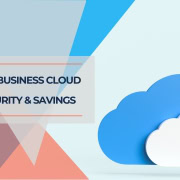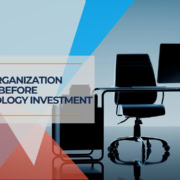The Benefits of Migrating to Microsoft 365: Scalability, Security, and Accessibility
Published: 2023-02-28 | Last updated: October 2025
Key Takeaway: Microsoft 365 offers businesses comprehensive cloud-based productivity with enhanced collaboration, enterprise-grade security, and seamless scalability that eliminates the limitations and costs of traditional on-premises servers while providing modern tools for today's distributed workforce.
Modern businesses face increasing demands for flexibility, security, and collaboration capabilities that traditional on-premises systems cannot deliver efficiently. Microsoft 365 has evolved into a comprehensive cloud platform that addresses these challenges while providing the familiar Office applications businesses rely on daily.
Whether you manage a small team or a growing enterprise, understanding how Microsoft 365 can transform your business operations is crucial for staying competitive. This comprehensive guide explores the platform's core benefits and provides practical guidance for transitioning from legacy systems to modern business productivity solutions.
Table of Contents
- 1 Enhanced Collaboration and Productivity Features
- 2 Advanced Communication Capabilities
- 3 Enterprise-Grade Security and Mobility
- 4 AI-Powered Automation and Intelligence
- 5 Cost Benefits and Scalability Advantages
- 6 Comprehensive Migration Planning and Process
- 7 Choosing the Right Microsoft 365 Plan
- 8 Integration with Existing Business Systems
- 9 Compliance and Data Governance
- 10 Frequently Asked Questions
- 10.0.1 How long does a typical Microsoft 365 migration take?
- 10.0.2 Can we maintain our existing email addresses during migration?
- 10.0.3 What happens to our data if we decide to leave Microsoft 365?
- 10.0.4 How does Microsoft 365 handle internet outages or connectivity issues?
- 10.0.5 Can Microsoft 365 integrate with our existing business applications?
- 10.0.6 What level of technical support does Microsoft provide?
- 11 Making the Strategic Decision
Enhanced Collaboration and Productivity Features
Microsoft 365's collaboration capabilities have transformed how teams work together. They offer real-time editing, seamless file sharing, and integrated communication tools that keep projects moving forward efficiently.
Microsoft Teams Integration
Teams is the central hub for workplace collaboration, combining chat, video conferencing, file sharing, and application integration in one platform. Teams supports up to 10,000 meeting participants and provides persistent chat workspaces that maintain project context over time.
Real-Time Co-Authoring
Multiple users can simultaneously edit Word documents, Excel spreadsheets, and PowerPoint presentations, with changes visible in real time. This eliminates version conflicts and reduces the back-and-forth of traditional document review processes.
Advanced Version History
SharePoint and OneDrive maintain comprehensive version histories for all documents, allowing users to restore previous versions, compare changes, and track document evolution over time. This provides both collaboration flexibility and data protection.
Cross-Platform Accessibility
Applications work seamlessly across Windows, macOS, iOS, and Android devices, ensuring team members can contribute regardless of their preferred platform. Web-based versions provide full functionality without requiring local software installation.
Advanced Communication Capabilities
Modern business communication extends beyond email, requiring integrated solutions supporting various communication styles and business needs.
Video Conferencing and Meetings
Teams provides enterprise-grade video conferencing with HD video quality, background blur and replacement, live transcription, and recording capabilities. Meeting recordings are automatically saved to SharePoint with searchable transcripts.
Screen Sharing and Collaboration
Advanced screen-sharing options include application-specific sharing, whiteboard collaboration, and allowing participants to request control of shared screens for interactive collaboration.
Persistent Chat Workspaces
Team channels provide organized, searchable communication histories that maintain context for ongoing projects. Integration with other Microsoft 365 applications allows seamless workflow management within chat environments.
Enterprise-Grade Security and Mobility
Security remains a top concern for businesses moving to cloud platforms. Microsoft 365 addresses these concerns with comprehensive security features that often exceed what most organizations can implement on-premises.
- Advanced Threat Protection: Real-time protection against phishing, malware, and zero-day attacks with machine learning-based threat detection
- Multi-Factor Authentication: Configurable authentication requirements with support for authenticator apps, SMS, and hardware tokens
- Data Loss Prevention: Automated detection and protection of sensitive information across email, documents, and communications
- Mobile Device Management: Microsoft Intune integration provides comprehensive device management and security policy enforcement
- Conditional Access: Location-based and device-based access controls that adapt to risk levels
Security Consideration
While Microsoft 365 provides robust security features, organizations must still configure and manage these tools appropriately. Regular security assessments and proper user training are essential to a comprehensive security strategy.
AI-Powered Automation and Intelligence
Microsoft 365 incorporates artificial intelligence throughout the platform to automate routine tasks and provide intelligent insights that improve productivity and decision-making.
Microsoft Copilot Integration
AI-powered assistance integrated across Word, Excel, PowerPoint, and Outlook helps users create content, analyze data, and manage communications more efficiently. Copilot can draft emails, summarize documents, and develop presentations based on natural language requests.
Power Automate Workflows
Create automated workflows that connect Microsoft 365 applications with hundreds of other business systems. Standard automations include approval processes, data synchronization, and notification systems that reduce manual administrative work.
Analytics and Insights
Workplace Analytics provides insights into collaboration patterns, meeting effectiveness, and productivity trends. These insights help organizations optimize their work practices and identify areas for improvement.
Intelligent Search and Discovery
Microsoft Search uses AI to help users find relevant information across all Microsoft 365 applications and connected systems. Search results include people, documents, sites, and answers based on organizational knowledge.
Cost Benefits and Scalability Advantages
Moving from on-premises servers to Microsoft 365 often provides significant cost savings while improving capabilities and reducing management overhead.
| Cost Factor | On-Premises Server | Microsoft 365 |
|---|---|---|
| Initial Investment | High hardware and software costs | Predictable monthly subscription |
| Maintenance | Ongoing IT staff and support costs | Included in subscription |
| Scalability | Expensive hardware upgrades | Add users instantly |
| Updates | Major upgrade projects | Automatic feature updates |
| Disaster Recovery | Additional backup systems are required | Built-in redundancy and backup |
Predictable Operating Expenses
Microsoft 365 subscriptions convert unpredictable capital expenses into manageable operating expenses. This improves cash flow management and makes budgeting more straightforward for growing businesses.
Instant Scalability
Adding new users takes minutes rather than the weeks or months required for hardware procurement and setup. This agility supports business growth and seasonal workforce changes without infrastructure constraints.
Reduced IT Overhead
Microsoft handles infrastructure maintenance, security updates, and system monitoring, allowing internal IT teams to focus on strategic initiatives rather than routine maintenance tasks.
Comprehensive Migration Planning and Process
Successfully migrating to Microsoft 365 requires careful planning and execution. Understanding the migration process helps ensure a smooth transition with minimal business disruption.
Pre-Migration Assessment
Evaluate current email storage requirements, identify custom applications or integrations, and assess network bandwidth capabilities. Document existing user permissions and distribution lists to ensure proper configuration in the new environment.
Migration Method Selection
Choose between cutover migration (suitable for smaller organizations), staged migration (for larger Exchange deployments), or hybrid migration (for complex environments requiring gradual transition). Each method has specific requirements and timelines.
User Training and Change Management
Develop training programs that address technical skills and workflow changes. Focus on collaboration features that provide immediate value and demonstrate the new platform's benefits to encourage adoption.
Post-Migration Optimization
Configure security policies, set up automated workflows, and optimize SharePoint sites for team collaboration. Regular usage reviews help identify opportunities for additional productivity improvements.
Choosing the Right Microsoft 365 Plan
Microsoft 365 offers several plans designed for different business needs and sizes. Understanding these options helps ensure you select the most appropriate and cost-effective solution.
Microsoft 365 Business Basic
Web-based Office applications, Teams, SharePoint, and Exchange Online with 50GB mailbox storage. It is ideal for businesses that primarily use web applications and need basic collaboration tools.
Microsoft 365 Business Standard
Includes desktop Office applications plus all Business Basic features. Provides offline access to Word, Excel, PowerPoint, and Outlook with premium features and advanced security capabilities.
Microsoft 365 Business Premium
Comprehensive solution including advanced security features, device management capabilities, and enhanced compliance tools. Suitable for businesses requiring robust security and management capabilities.
Enterprise Plans
E3 and E5 plans provide advanced analytics, voice capabilities, and enhanced security features for larger organizations with complex requirements and compliance needs.
When selecting a plan, consider your organization's security requirements, compliance needs, and whether users need desktop applications or can work effectively with web-based versions. Many businesses find that starting with Business Standard provides the right balance of features and cost, with the option to upgrade specific users to Premium plans as needed.
Integration with Existing Business Systems
Microsoft 365's strength lies in integrating with existing business applications and workflows, creating a unified productivity environment rather than isolated tools.
Customer Relationship Management
Native integration with Dynamics 365 and connectors for Salesforce, HubSpot, and other CRM systems allows sales teams to access customer information directly within Outlook and Teams conversations.
Accounting and Financial Systems
Excel's Power Query and Power BI integration enables sophisticated financial reporting and analysis. Direct connections to QuickBooks, Sage, and other accounting platforms streamline financial workflows.
Project Management Tools
Microsoft Project integration, plus connectors for Asana, Trello, and Monday.com, ensures project information remains accessible within the Microsoft 365 environment while maintaining existing workflows.
Understanding how Microsoft 365 compares to Google Workspace for businesses evaluating different productivity platforms can help inform platform decisions based on specific business requirements and existing technology investments.
Compliance and Data Governance
Modern businesses must navigate complex regulatory requirements while maintaining operational efficiency. Microsoft 365 provides comprehensive compliance tools that help organizations meet these obligations.
- Data Residency Controls: Choose where your organization's data is stored and processed to meet regulatory requirements
- Retention Policies: Automated data retention and deletion policies that comply with industry-specific regulations
- eDiscovery Capabilities: Advanced search and hold capabilities for legal and compliance investigations
- Audit Logging: Comprehensive activity logging across all Microsoft 365 services for compliance monitoring
- Information Protection: Automatic classification and protection of sensitive documents and emails
Organizations in regulated industries benefit from Microsoft 365's compliance certifications, including SOC 2, HIPAA, GDPR, and industry-specific standards that reduce the compliance burden on individual businesses.
Frequently Asked Questions
How long does a typical Microsoft 365 migration take?
Migration timelines vary based on organization size and complexity. Small businesses with basic email needs can typically complete migration in 1-2 weeks, while larger organizations with complex requirements may need 4-8 weeks for planning, execution, and user training. The actual data migration often occurs over a weekend to minimize business disruption.
Can we maintain our existing email addresses during migration?
Yes, Microsoft 365 supports custom domain names, allowing you to keep existing email addresses. The migration process includes domain verification and DNS configuration to ensure seamless email delivery throughout the transition period.
What happens to our data if we decide to leave Microsoft 365?
Microsoft 365 provides data export capabilities that allow you to download your organization's emails, documents, and other data. However, planning for data portability should be part of your initial migration strategy to ensure smooth transitions if business needs change.
How does Microsoft 365 handle internet outages or connectivity issues?
While Microsoft 365 requires internet connectivity for full functionality, desktop applications can work offline with locally cached files. Changes sync automatically when connectivity returns. Microsoft maintains 99.9% uptime guarantees with financial credits for service level breaches.
Can Microsoft 365 integrate with our existing business applications?
Microsoft 365 offers extensive integration capabilities through Power Automate, Graph API, and pre-built connectors for popular business applications. Most modern business software includes Microsoft 365 integration options, and custom integrations can be developed for specialized requirements.
What level of technical support does Microsoft provide?
Microsoft 365 includes web-based support resources, community forums, and phone support during business hours. Premium support plans provide 24/7 phone support, faster response times, and dedicated technical account management for complex environments.
Making the Strategic Decision
Migrating to Microsoft 365 represents more than a technology upgrade—it's a strategic business decision that impacts productivity, security, and operational efficiency. The platform's comprehensive feature set, predictable costs, and continuous innovation make it an attractive option for businesses seeking to modernize their IT infrastructure.
Success depends on proper planning, user training, and ongoing optimization of the platform's capabilities. Organizations that approach Microsoft 365 migration as a business transformation project, rather than simply a technology replacement, typically achieve better outcomes and higher user satisfaction.
For businesses ready to move beyond the limitations of traditional on-premises systems, Microsoft 365 provides a robust foundation for growth, collaboration, and innovation. When combined with proper implementation support and strategic IT simplification, the platform delivers measurable productivity and operational efficiency improvements that justify the investment and support long-term business success.











Leave a Reply
Want to join the discussion?Feel free to contribute!